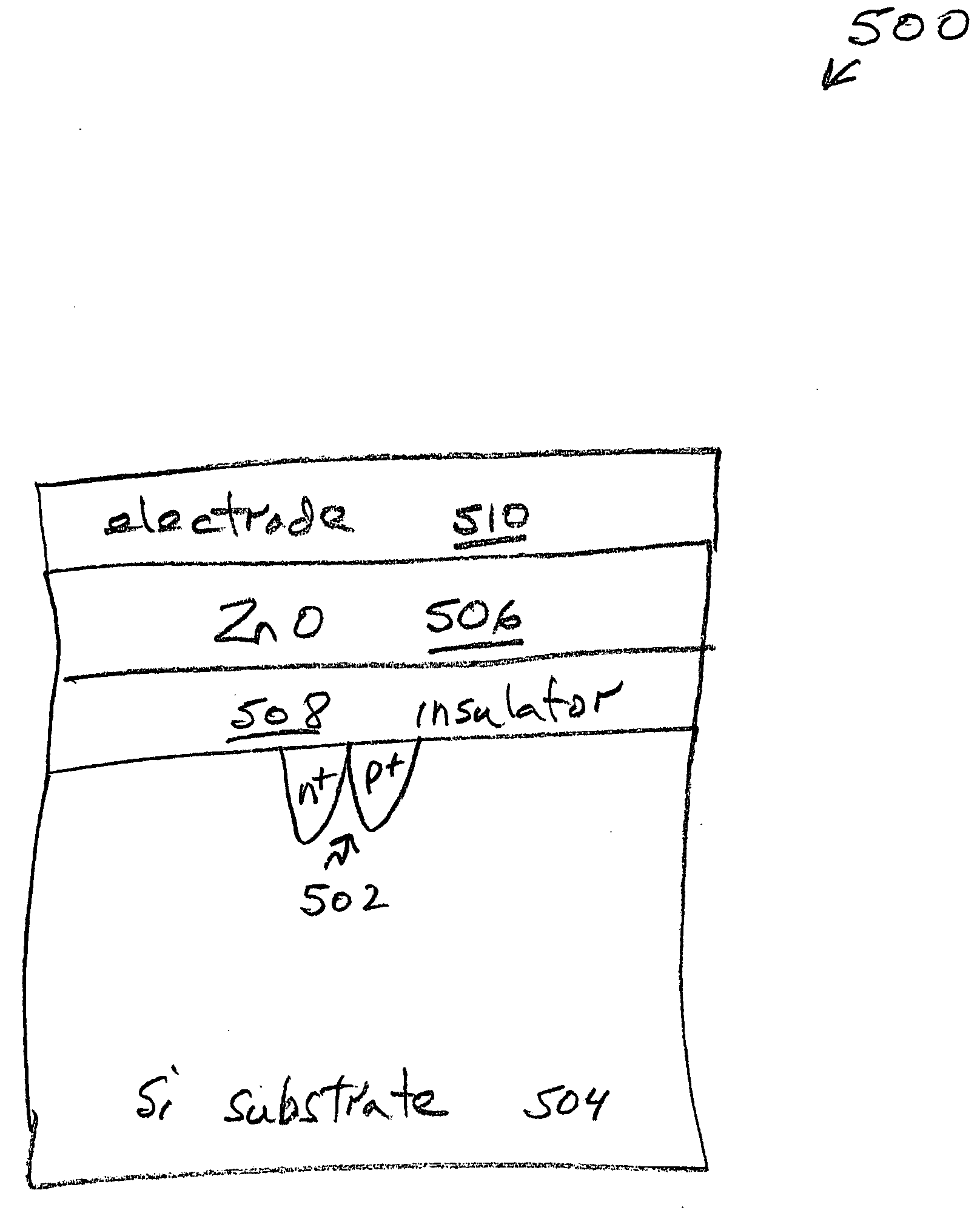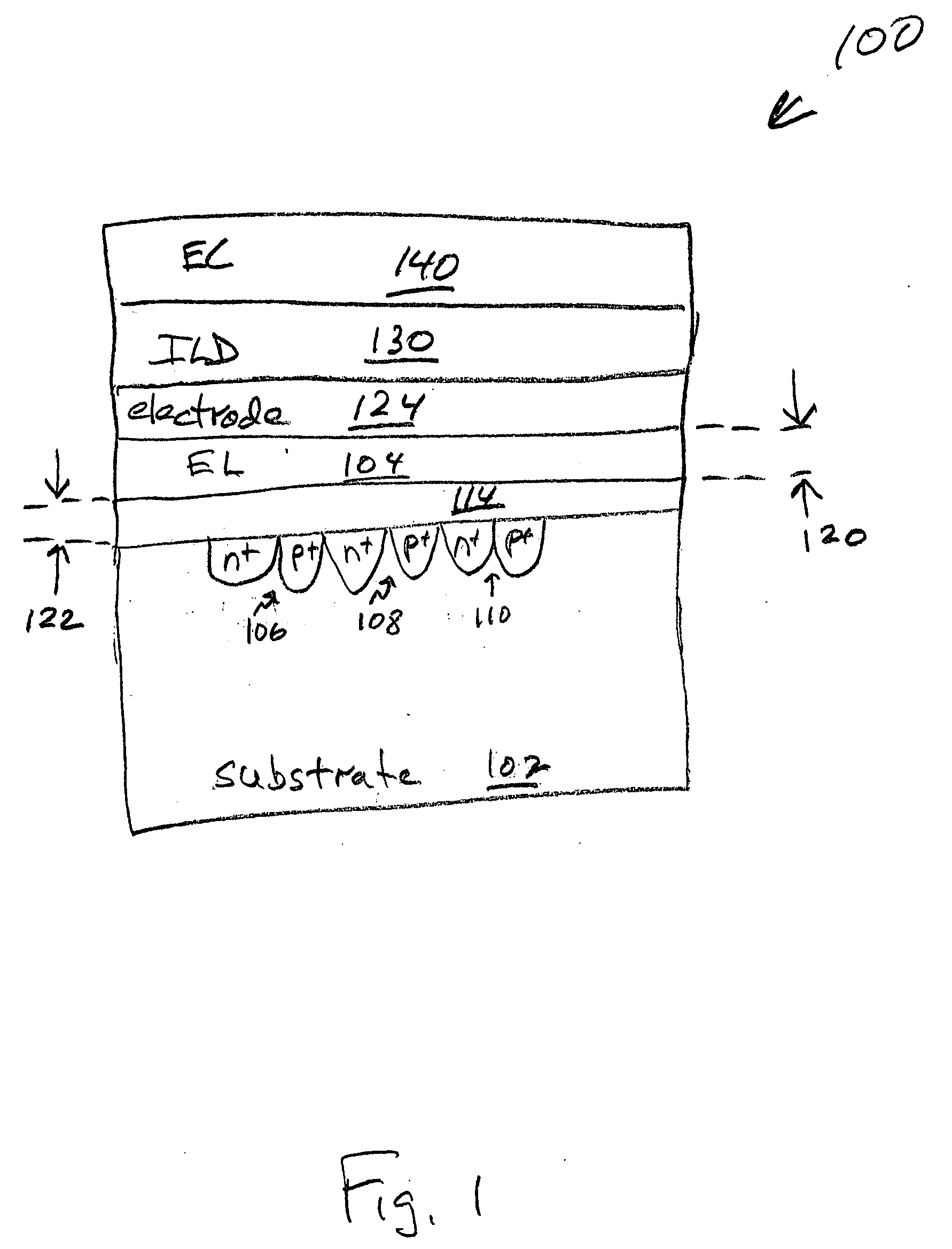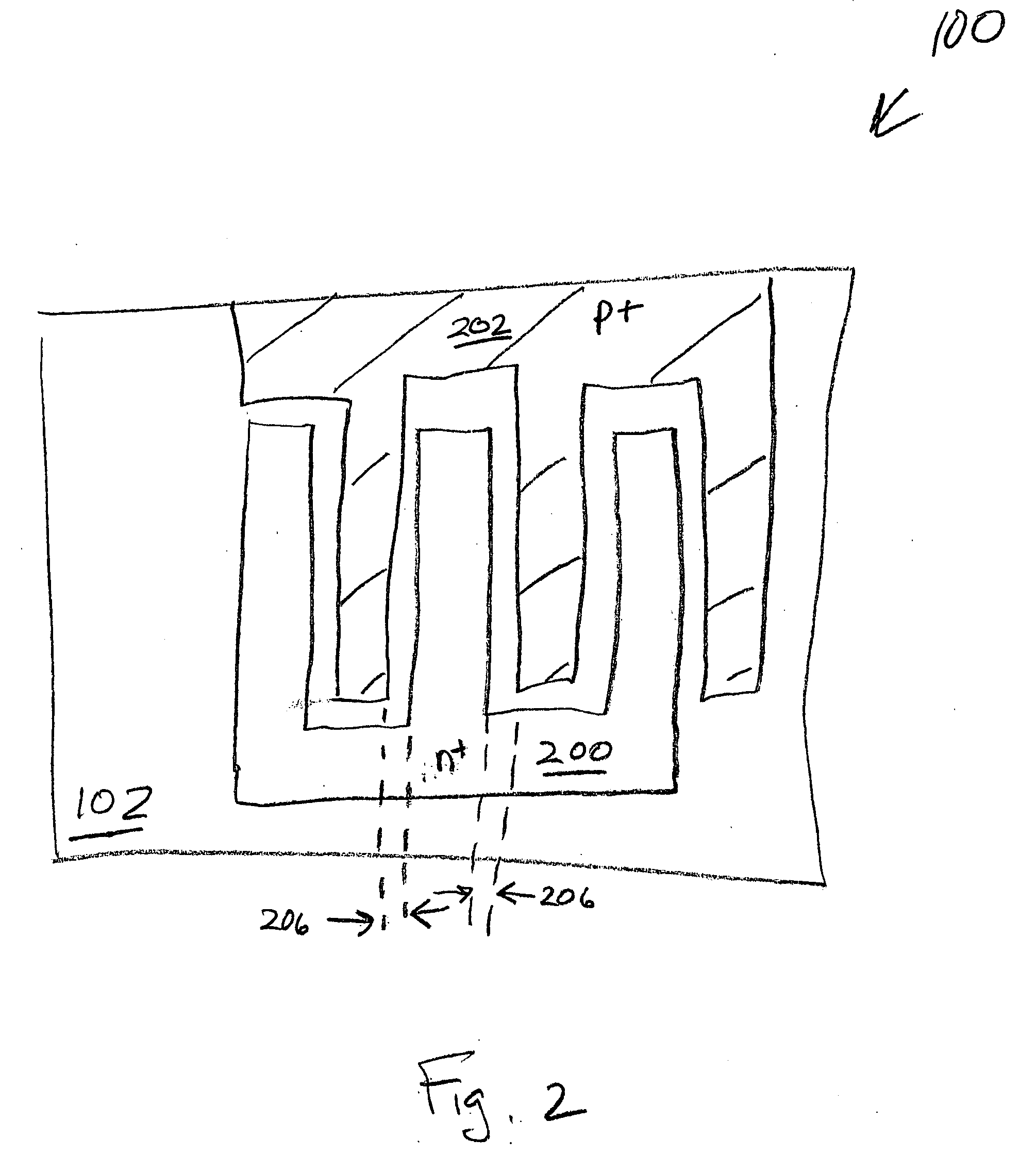Electroluminescent device
a technology of electroluminescent devices and substrates, applied in thermoelectric devices, identification means, instruments, etc., can solve problems such as poor light generation efficiency, and achieve the effect of fast rise and fall times and fast operation
- Summary
- Abstract
- Description
- Claims
- Application Information
AI Technical Summary
Benefits of technology
Problems solved by technology
Method used
Image
Examples
Embodiment Construction
[0032]FIG. 3 is a partial cross-sectional view of a first aspect of the present invention electroluminescent device. As an alternative to the explanation of FIG. 1 (explained below), the device 300 may be understood, in its simplest form, to comprise a p+ / n+ junction 302 and an electroluminescent layer 304 overlying the p+ / n+ junction 302. As in FIG. 1 the p+ / n+ junction 302 may be formed in a type IV semiconductor material substrate 306. It should be noted that the p+ / n+ junction may be formed in other types of substrate materials, besides type IV materials. The type IV substrate materials are cited because of their use in conventional CMOS processes.
[0033] The type IV semiconductor material 306 can be Si, C, Ge, SiGe, and SiC. For example, SOI, bulk Si, Si on glass, and Si on plastic substrates may be used. Again, as in FIG. 1, the electroluminescent layer 304 is a material such as nanocrystalline Si, nanocrystalline Ge, fluorescent polymers, or type II-VI materials such as ZnO, ...
PUM
 Login to View More
Login to View More Abstract
Description
Claims
Application Information
 Login to View More
Login to View More - R&D
- Intellectual Property
- Life Sciences
- Materials
- Tech Scout
- Unparalleled Data Quality
- Higher Quality Content
- 60% Fewer Hallucinations
Browse by: Latest US Patents, China's latest patents, Technical Efficacy Thesaurus, Application Domain, Technology Topic, Popular Technical Reports.
© 2025 PatSnap. All rights reserved.Legal|Privacy policy|Modern Slavery Act Transparency Statement|Sitemap|About US| Contact US: help@patsnap.com



